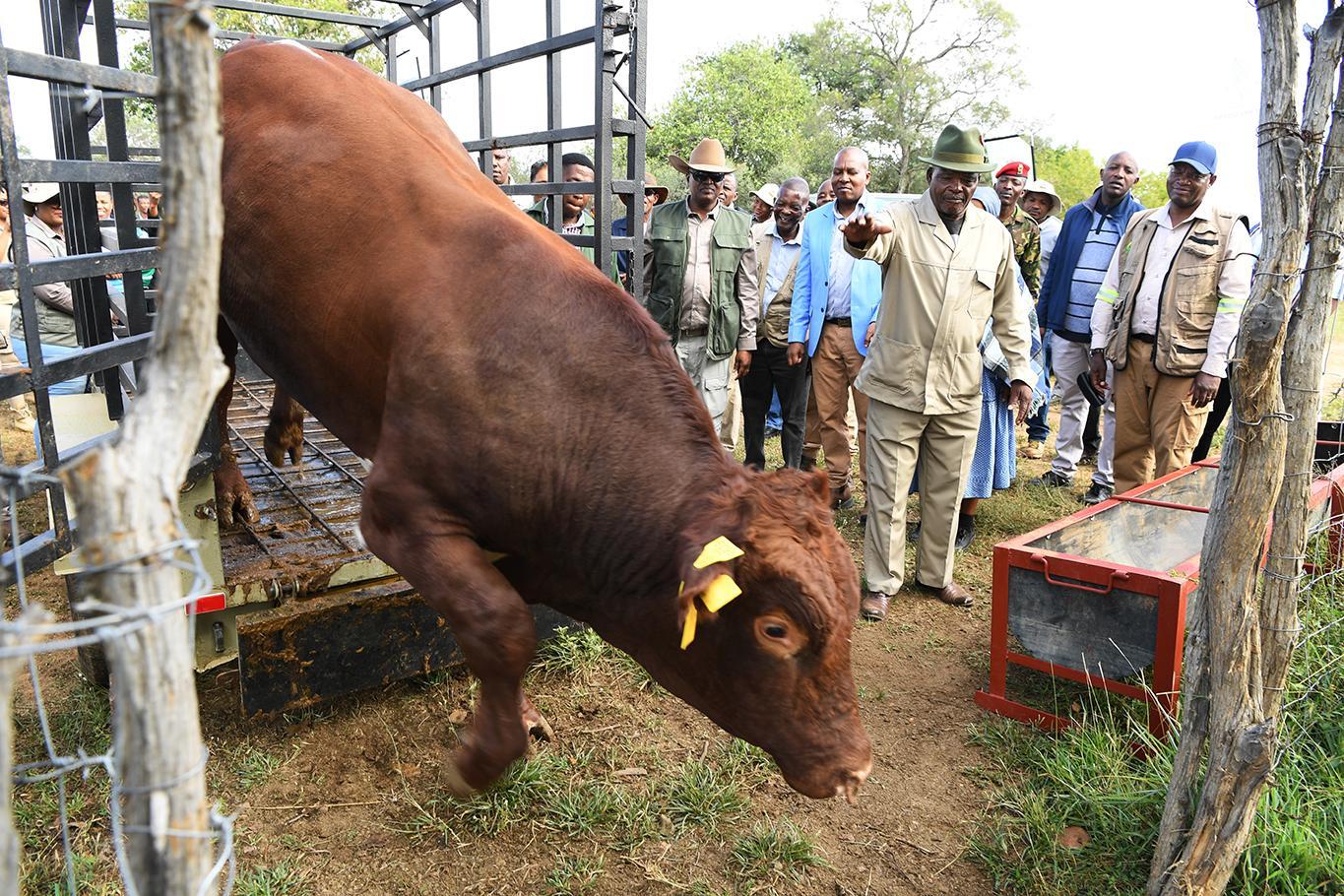Africa-Press – Botswana. Botswana is recognised by the World Organisation of Animal Health as a Contagious Bovine Pleuropneumonia (CBPP) free country.
The acting Minister of Lands and Agriculture, Dr Edwin Dikoloti told Parliament on yesterday that the Dobe, Qangwa and Xaixai areas shared a border with a non-free CBPP zone in Namibia, where cattle were vaccinated against the disease. He said there was minimal animal health risk to the Namibian cattle that returned to Namibia after crossing into Botswana, especially in areas from Xaixai to the north.
“There is no justification for the Namibian Veterinary Authorities to destroy animals that are returning from Botswana, at least from our technical and scientific assessment,” he said.
He said the movement of livestock into Zone 16, which was a livestock free zone, posed a risk of transmission buffalo-driven Foot and Mouth Disease (FMD) susceptible livestock such as cattle and small stock. Dr Dikoloti said in order to prevent potential outbreaks in Botswana due to vaccinated animals that might carry the disease without showing symptoms, any Botswana cattle interacting with cattle from Namibia in the border areas were destroyed as a matter of standard operating procedure.
He said the last instance occurred in 2023, involving 23 cattle and said such livestock, if returned and allowed to be in contact with livestock in the livestock areas along the buffalo fence from Tubu to Habu, could potentially set off an FMD outbreak, which might spread to the rest of Ngamiland and indeed the rest of the country, which could not be allowed. Dr Dikoloti said any movement of buffaloes, which were a carrier of the FMD virus into the livestock area posed a risk of transmitting FMD to FMD susceptible animals such as cattle or small stock.
“Accordingly, any buffaloes that have moved into livestock areas are immediately destroyed or driven back into Zone 16 to reduce the risk of contact with livestock,” he said.
The acting minister said Ngamiland experienced an outbreak of dermatophilosis disease, which was exacerbated by Bont tick infestations around the Okavango Delta in 2015. He said his ministry responded with awareness campaigns and free dipping or treatment demonstrations to control the spread.
Dr Dikoloti further said that a 30 per cent drought subsidy in the financial year 2024/2025 included dips or dipping of animals to encourage farmers to carry out their own dipping. He said such interventions have assisted in the control of the disease, however, in overall, the effectiveness of those measures varied, leading to significant livestock mortality in some areas due to slow farmer response and locality differences.
The acting minister was responding to a question from the Ngami, MP Mr Phillimon Aaron who wanted to know if the minister was aware that people of Ngami had been turned destitute as a result of the livestock being killed due to the outbreak of cattle disease. Mr Aaron also wanted to know whether cattle in Dobe Qangwa and Xaixai areas were killed despite not crossing any fence with little or no compensation.
The MP also enquired if the minister was aware that Namibian cattle that had crossed into Botswana were not killed but instead were allowed to go back to Namibia and why they were allowed to freely return to Namibia. He also wanted to know if the same thing happened on the eastern side with cattle farmers from Tubu to Habu losing large numbers of cattle.
Mr Aaron also wanted to know if buffaloes, which were believed to be carriers of FMD when found on the cattle side were not killed but driven back using BDF helicopter. He also asked if the minister was aware that the area from Makalamabedi to Gudigwa had suffered the greatest loss in cattle population than other areas in Botswana due to negligence associated with how the outbreak of cattle disease was dealt with.
Source: DAILYNEWS
For More News And Analysis About Botswana Follow Africa-Press






